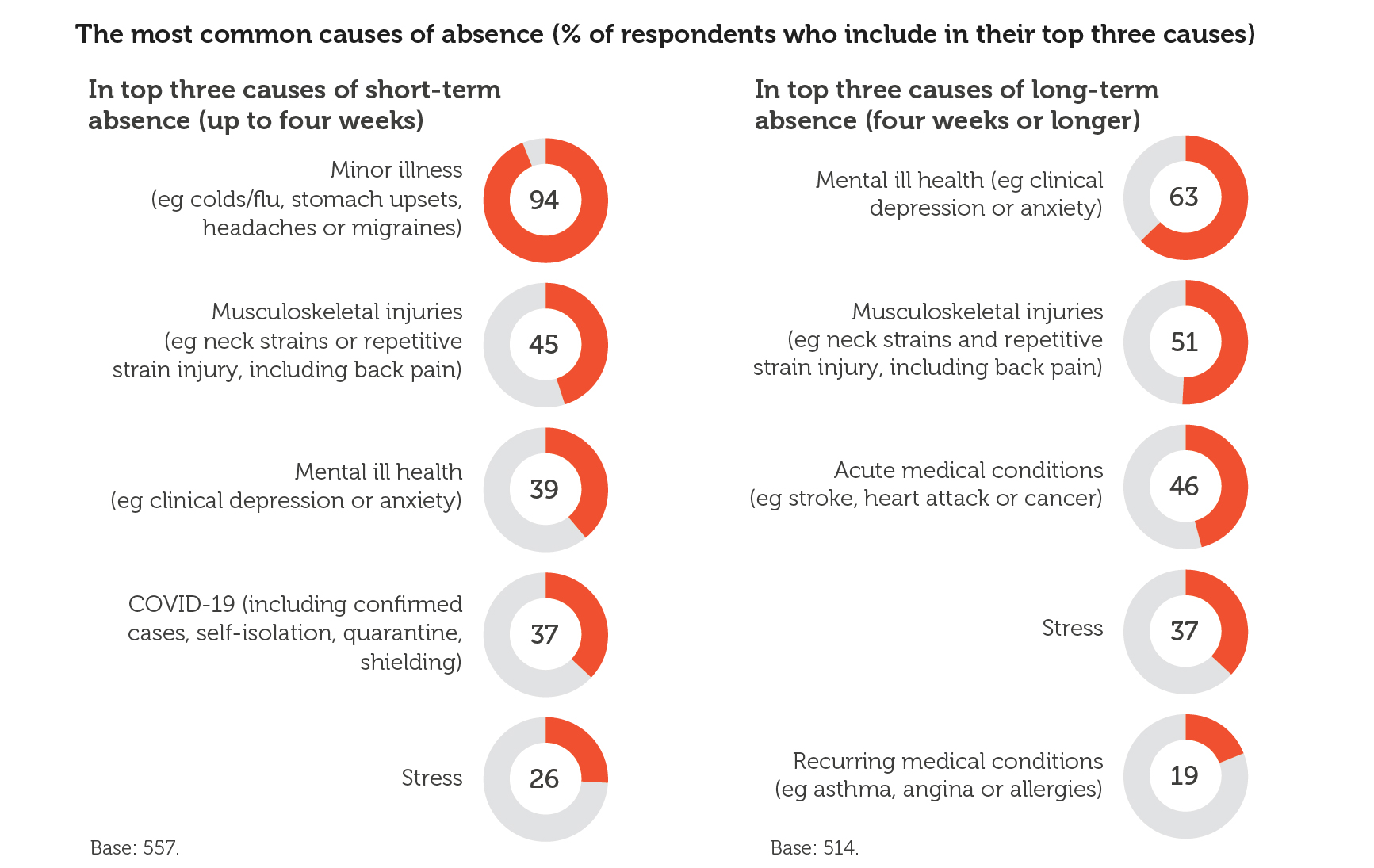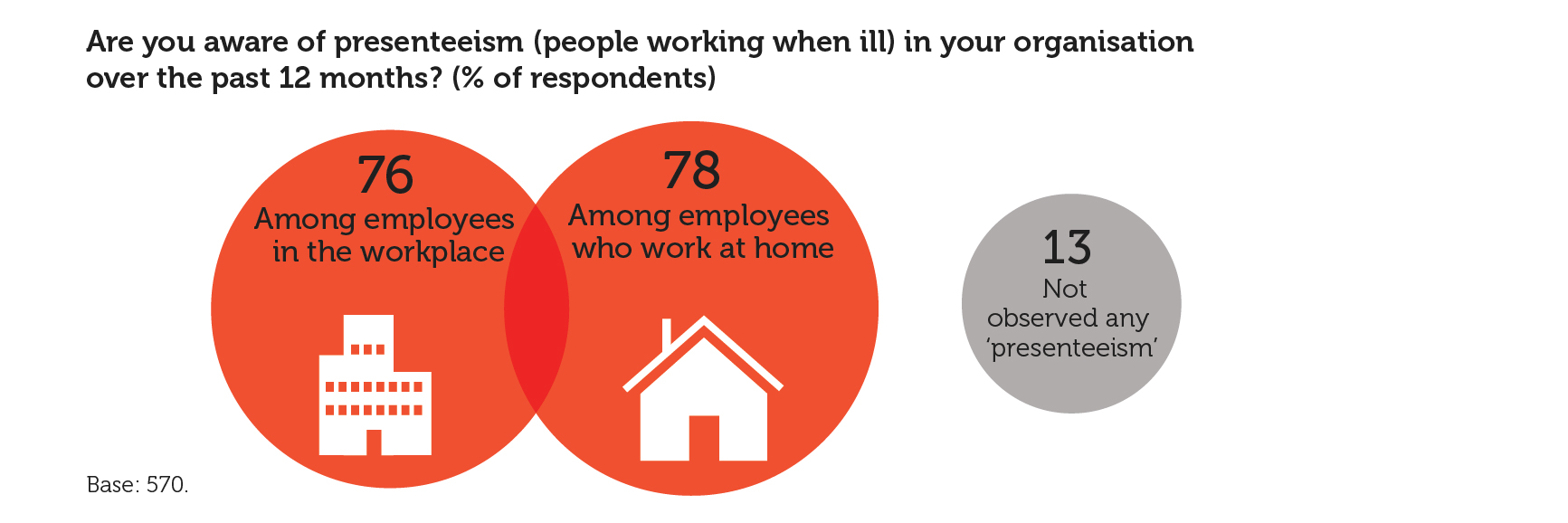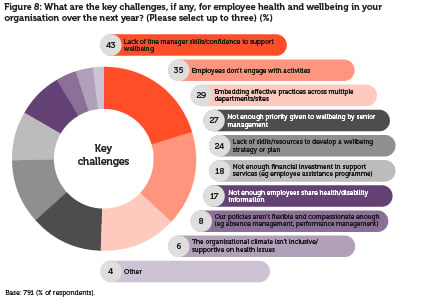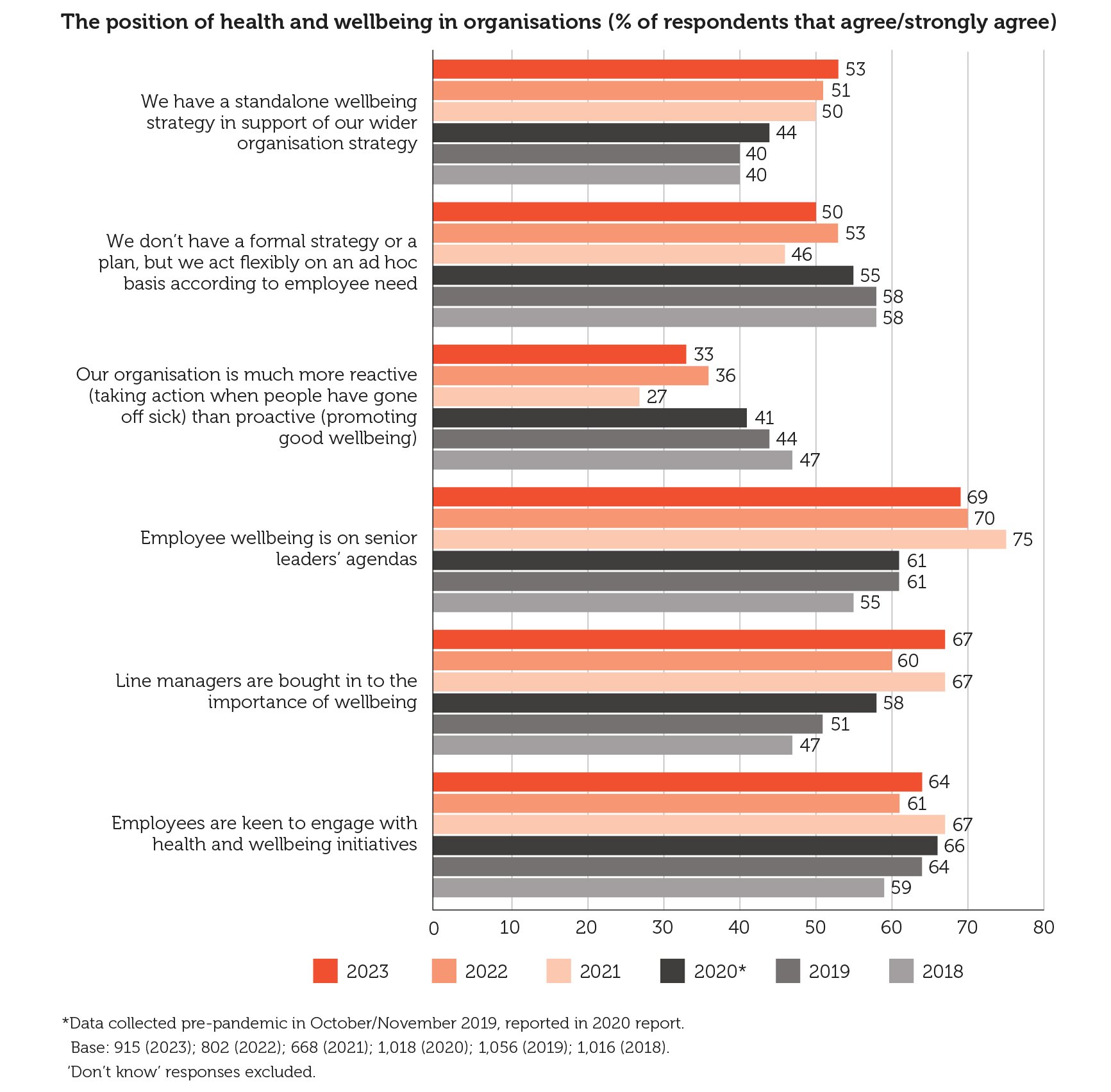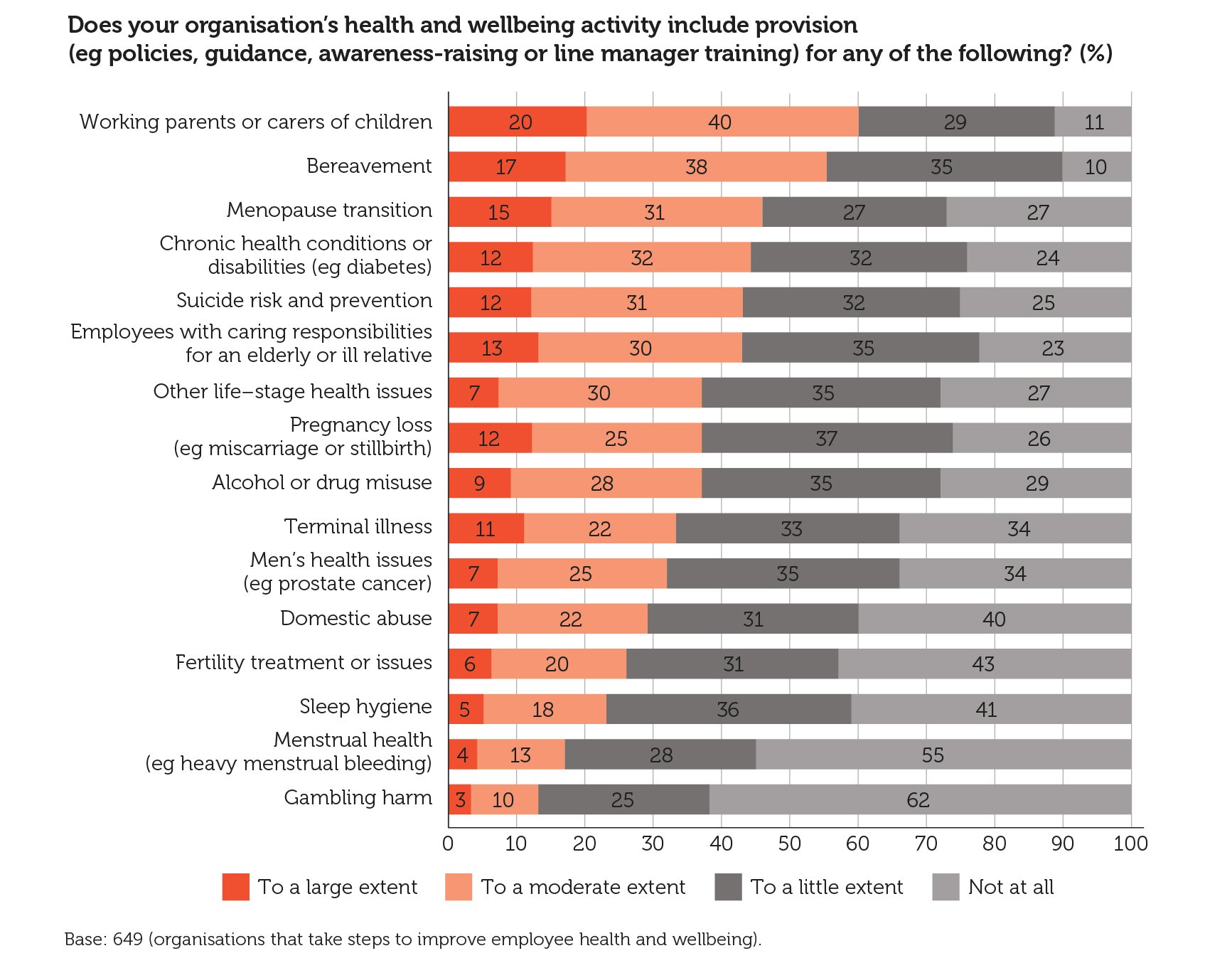Watch Rachel Suff, Senior Policy Adviser at the CIPD, discuss the key findings and recommendations of this year's report
This year the research reveals that:
Employee sickness absence is at the highest level we've reported for over a decade
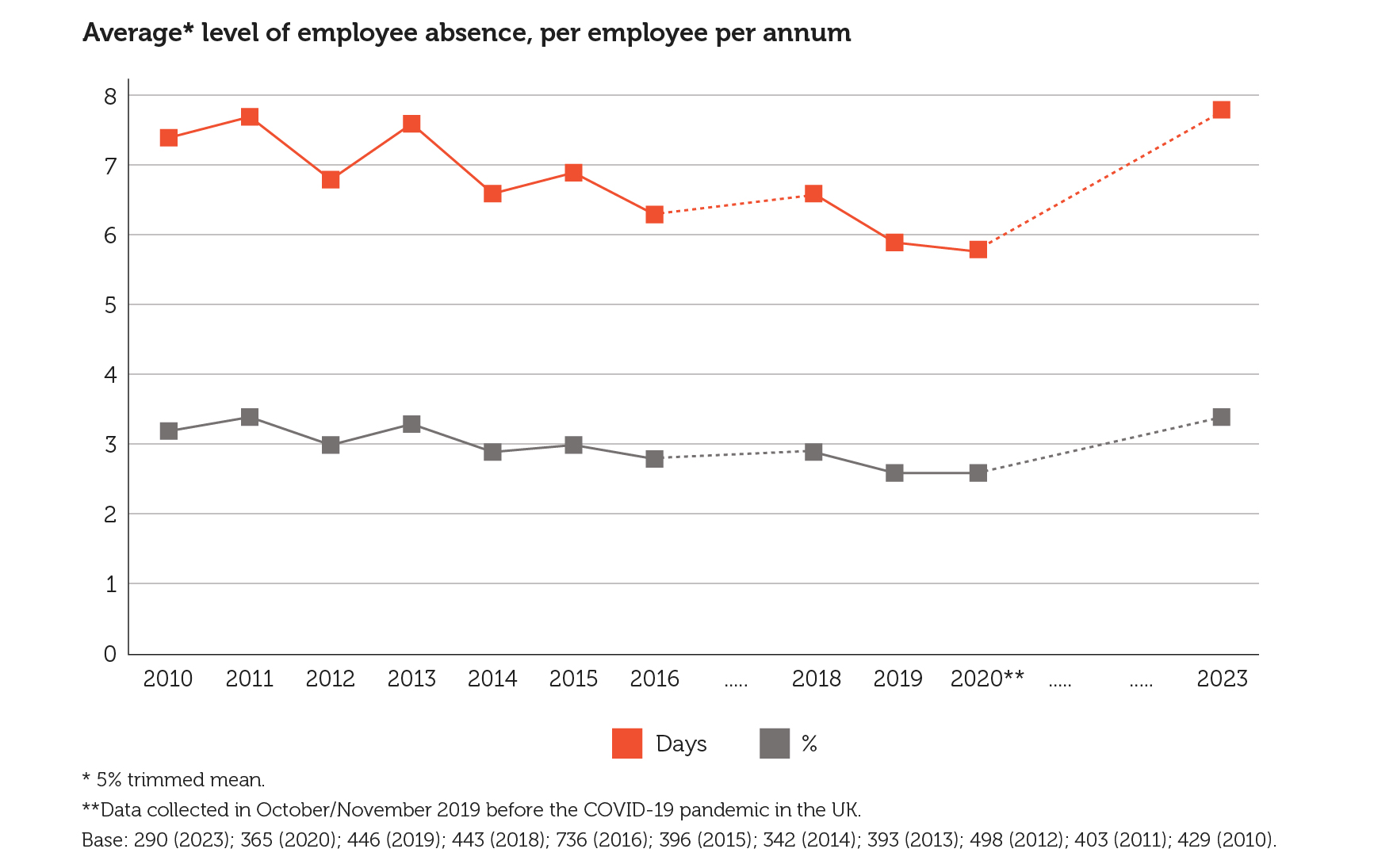 |
Mental ill health and musculoskeletal injuries are two of the top causes of both short-term and long-term absence
Stress and mental health require continued focus
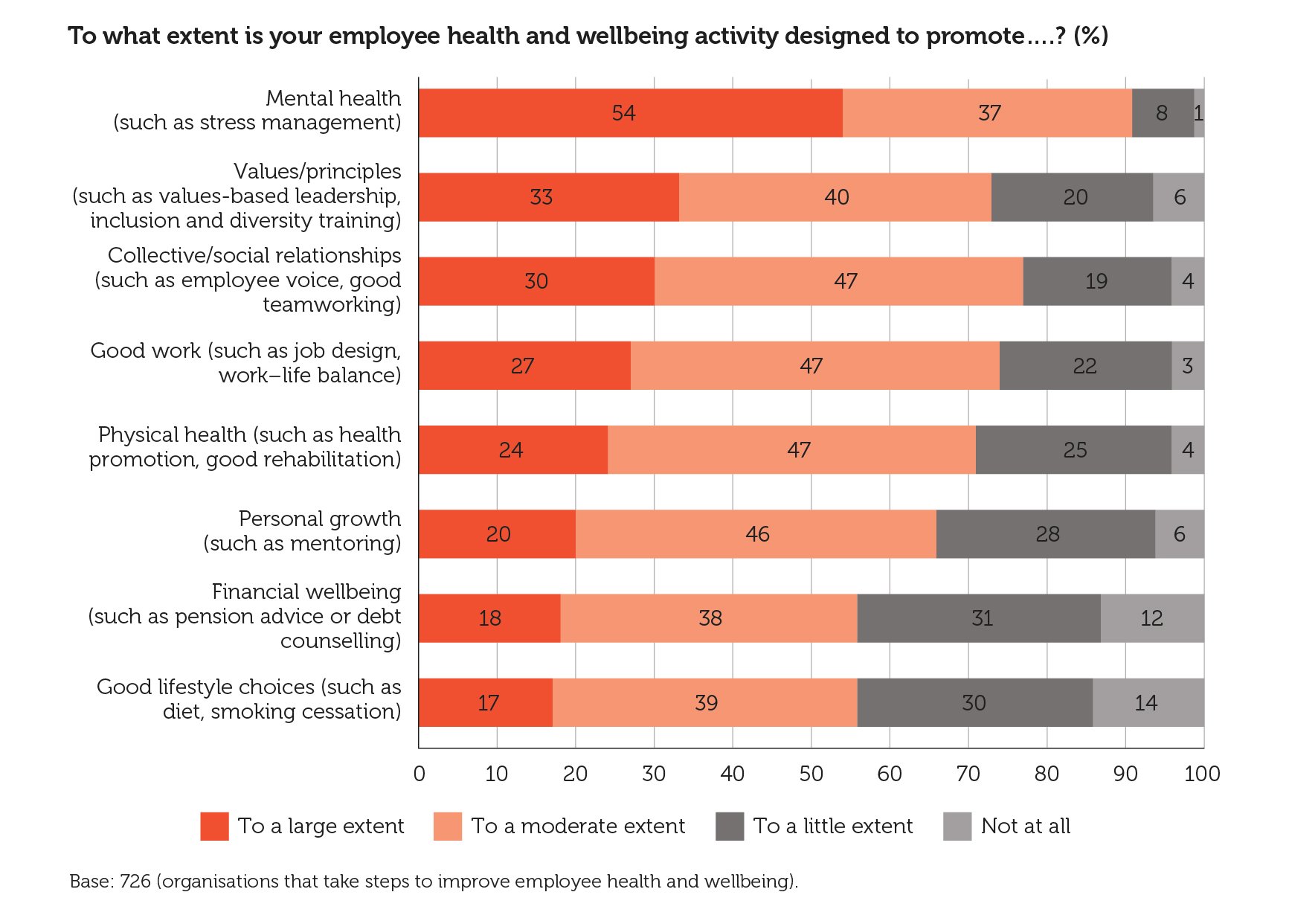 |
Presenteeism and leaveism remain widespread
Line managers need more training and support as more than half of organisations say they take primary responsibility for managing absence
Over half of organisations are now approaching health and wellbeing through a stand-alone strategy
There’s variable support for wellbeing issues through the employee lifecycle
Evaluating the impact of health and wellbeing activity helps to improve outcomes
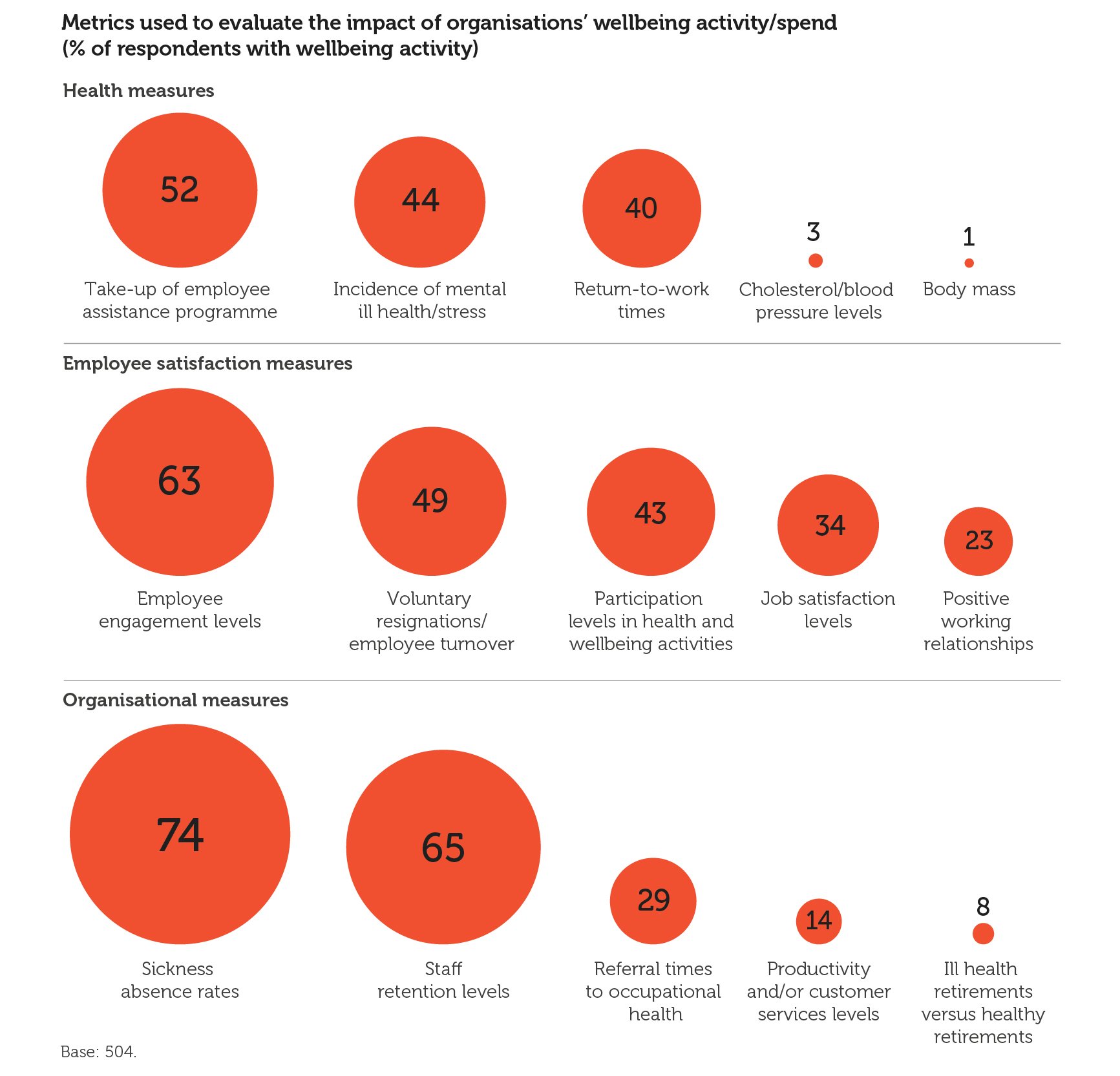 |
|
Explore our case studies on health and wellbeing at work
Employee views on health and wellbeing
This year we have also examined what employees think about health and wellbeing at work using our Good Work Index data.
How employees feel about health and wellbeing at work
- In 2023, employees generally feel positively about their mental and physical health, with over half reporting this to be good or very good.
- Nevertheless, staff feel much more mixed on how work affects both their mental health, with over a quarter reporting a negative impact.
- These negative effects are especially notable for public sector workers, whose experiences at work are more likely to contribute to lower wellbeing than private sector employees.
- Specifically, public sector workers are more likely to feel exhausted and under excessive pressure at work.
- Employees tend not to discuss their health issues with their boss or employer. Only in cases of an injury due to an accident at work, COVID-19 and heart problems have over half of workers done so.
- Despite this, staff feel mildly positive about the climate of wellbeing in their organisations. There is more agreement than disagreement on whether or not they are encouraged to speak about their mental health (51% agree or strongly agree) and are supported when they do so (57% agree or strongly agree).
- Line managers are perceived very positively with regards to their support and treatment of their staff around mental health. This is in contrast with the findings from the survey of people professionals, where a ‘lack of line manager skills and confidence’ is rated as the top challenge for health and wellbeing over the next year (43% of respondents).
- Many employees find their workload to be about right, but more than 31% feel they have too much to do in a normal week.
- Over half of employees (53%) have done their job in the last three months despite not feeling well, up from 46% in 2022.
- Pressure to work despite not feeling well often comes from within (93%), with employees feeling less pressure from their manager or their colleagues.
CIPD Trust
Tackling barriers to work today whilst creating inclusive workplaces of tomorrow.
Bullying
and harassment
Discover our practice guidance and recommendations to tackle bullying and harassment in the workplace.

Practical guidance to help employers create a carer-friendly workplace

Explore the CIPD’s point of view on health and wellbeing at work, including recommendations for employers

CIPD's resource on employers' legal obligations to reduce work-related stress and increase employee wellbeing. This resource includes legislation and case law, demonstrating how this issue is seen in the courts.

Find out more about the Mental Health at Work Commitment and the CIPD content that will help you to meet the standards

Insight from the CIPD’s survey into factors driving pay decisions in UK workplaces and recommendations for practice

Find out about the importance of neuroinclusive workplaces, what employers are doing and the working experiences of neurodivergent and neurotypical employees

A report seeking common ground in skills policy across the UK’s four nations

Insight into how global issues are impacting people professionals in the UK, Ireland, Asia-Pacific, MENA and Canada

